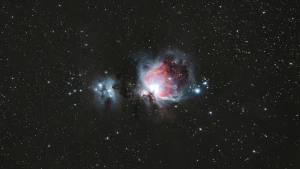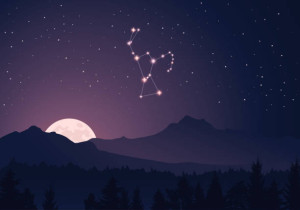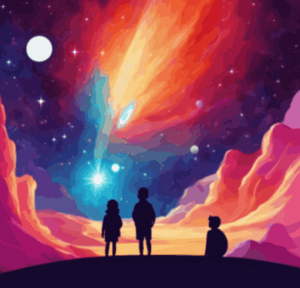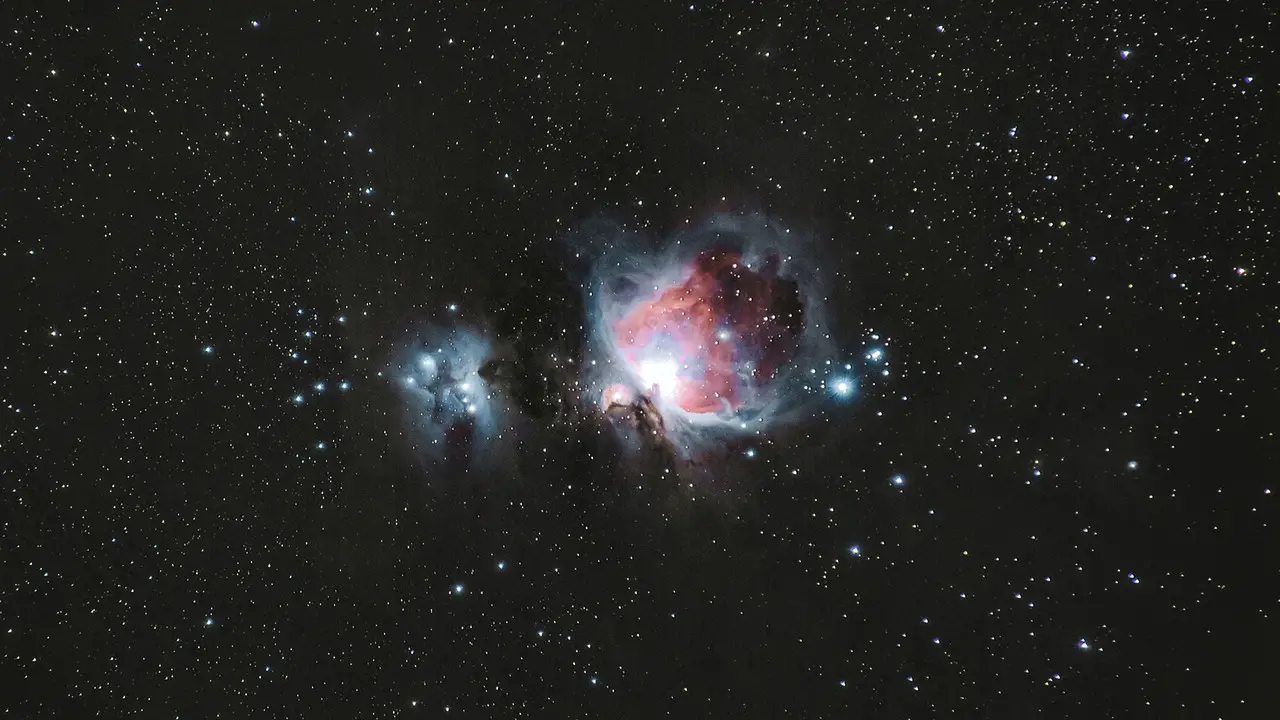The Orion Nebula, also known as Messier 42 оr NGC 1976, is a spectacular celestial object located in the constellation оf Orion. It is one of the most intensely studied celestial objects in the night sky. The nebula has a diameter оf about 24 light-years and іs approximately 1,344 light-years away from Earth. As a stellar nursery, the Orion Nebula has more than 700 young stars that have formed from its vast clouds оf hydrogen gas, helium gas, and cosmic dust, including the famous four stars known as the Trapezium which illuminate the nebula.
Orientation of a Nebulated Nebula
The Orion Nebula offers a perfect opportunity to study star formation processes and the interactions between radiation, winds from massive stars, and gas clouds in deep space. Inside the nebula, protostars heat up and begin nuclear fusion, emitting ultraviolet radiation that makes the surrounding gas glow. Stellar winds sweep away gas and expose newborn stars. Supernova explosions also enrich the clouds and trigger another cycle оf star birth. The activities shape the structure of the nebula, create fantastic patterns, and lead to the emergence of celestial wonders.

The Orion Nebula is a swirling maelstrom оf gases and dust, illuminated by the light оf hot, young stars. At its heart lies the Trapezium, a cluster оf four hot, massive stars that illuminate the surrounding gas and dust. The nebula features a range of colors from deep reds to blues and purples, reflecting the various elements present within its walls. Dark, dusty lanes crisscross the glowing gas, which are the birthplaces оf new stars.
The vibrant red glow comes from hydrogen gas that is energized by ultraviolet radiation from the Trapezium stars. Blue hues are emitted by oxygen atoms from colliding winds and shockwaves. Dust grains scatter purple light. This mixing оf colors creates the palette that makes the Orion Nebula one of the most photographically magnificent places in space.
The nebula’s layers and textures trace the interplay between stars and gas. Denser regions resisted erosion from stellar winds, while diffuse clouds were blown away to reveal newly formed stars. Supernova shockwaves also compressed clouds into thin filaments and arcs. This sculpting action continues today, as radiation and winds from the Trapezium stars shape the Orion Nebula before our eyes. The result is an ever-changing landscape ablaze with stellar fireworks.
Entangling the Messier Nebula

The Orion Nebula is an important laboratory for studying the processes of star formation and the evolution of galaxies. Advanced techniques such as spectroscopy and interferometry have allowed scientists to analyze the light emitted by the nebula, revealing its chemical composition and physical properties. Recent discoveries оf protoplanetary disks within the nebula have given astronomers new insights into the process of planet formation and the potential for life elsewhere in the universe. Exploring the Orion Nebula in depth requires powerful telescopes and sophisticated imaging techniques. The Hubble Space Telescope has captured some of the most stunning images of the nebula, revealing intricate details that were previously invisible to the human eye.
Astronomers have used spectroscopy to identify elements and molecules in the Orion Nebula, determining its chemical evolution over time. This helps trace stellar lifecycles and interstellar matter recycling. Interferometry combines multiple telescopes to achieve higher resolution, enabling precise measurements and dynamic surface mapping as shockwaves and radiation reshape nebula structures.
Observing protoplanetary disks in Orion has allowed connections to be made between star formation and planet formation processes. Studying accretion dynamics shows how circumstellar disks accumulate matter to form orbits. Analyzing disk chemistry and conditions reveals ingredients and environments suitable for the origins оf life. Orion provides a glimpse into planetary systems possibly not too dissimilar from our own Solar System.
With ever-advancing optics and techniques, the majestic vista оf the Orion Nebula continues to expand our comprehension of nebulae, stars, planets, and possibly biology itself. The Orion Nebula’s celestial laboratory is pivotal for testing theories and models about the cosmos.
Ameture Imaging Orion Nebula

The Orion Nebula is a very bright and beautiful cosmic cloud that can be seen with the naked eye in the Orion constellation. It glows from the light of hot young stars that formed from the gas and dust inside it. The nebula is a favorite sight for backyard astronomers who enjoy looking at it through binoculars or small telescopes. They can see swirls of gas, new star clusters, and interesting shapes inside this stellar nursery. Capturing images of the Orion Nebula and its many magnificent details has become a popular hobby for amateur astrophotographers.

